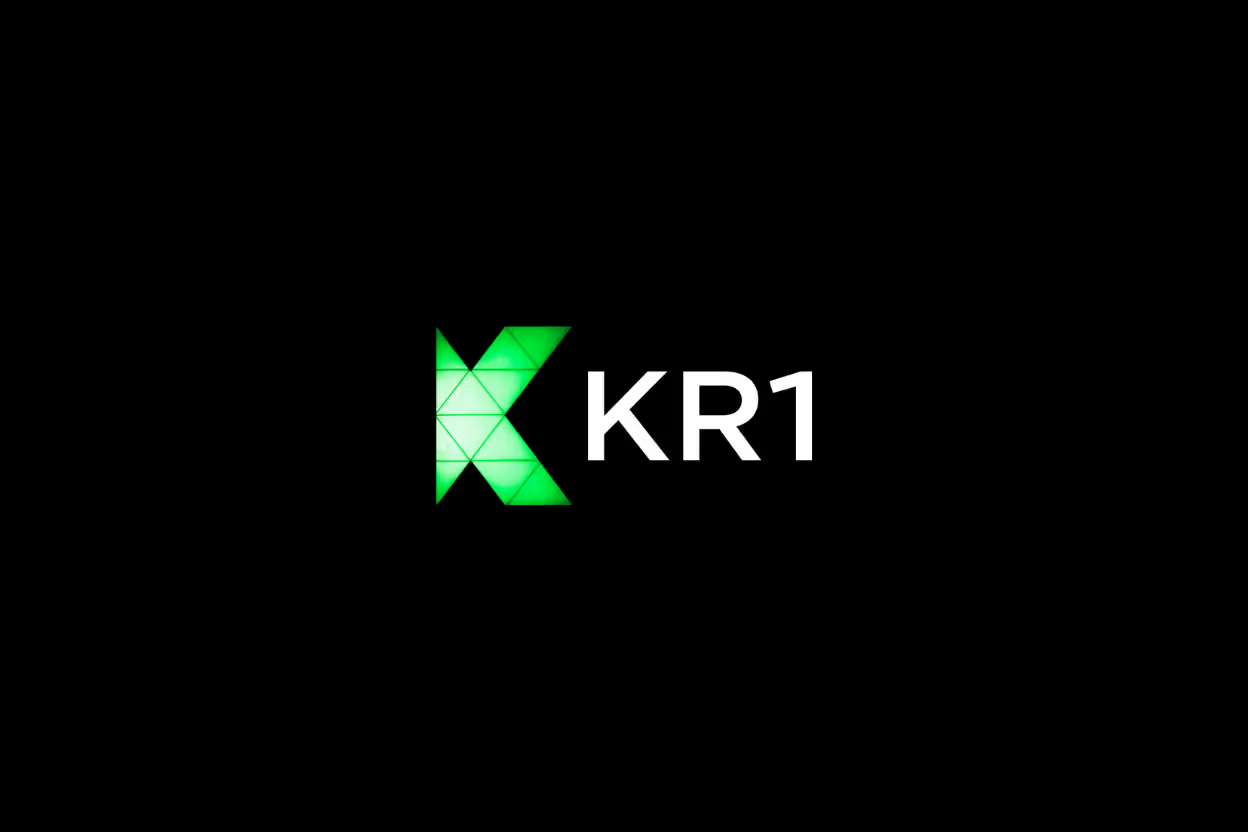In the blockchain and Web3 space, the identity of developers is changing fast. Where once many creators stayed behind masks of anonymity, today, public recognition carries new weight. This shift matters because identity impacts how projects earn trust, build teams, and spark innovation in decentralized environments.
Crypto founders face a choice: remain anonymous or step into the spotlight. Both have benefits, but each shapes collaboration differently. This post will explore how the identity of developers affects the way Web3 projects develop and succeed, touching on questions like how trust is formed when pseudonyms hide real faces, or what happens when founders reveal themselves openly.
Understanding these dynamics helps founders, investors, and developers decide how and when to build their public personas. The goal is to see how identity influences not only technology but also the social fabric of blockchain projects.
The Role of Anonymity in Blockchain Development
In blockchain development, anonymity often serves as a shield and a strategic choice. Many developers start their journey behind a veil, hiding their real identities to navigate a volatile environment. This section unpacks why anonymity matters for developers, the benefits and challenges it brings, and how it influences the way users view a project.
Reasons Developers Opt for Anonymity
Developers choose anonymity for solid reasons beyond just hiding their names.
- Privacy Concerns: In a space where personal data is vulnerable, avoiding exposure protects developers from unwanted attention or harassment. Privacy isn’t just a preference but a necessary safeguard.
- Protection from Legal Risks: With blockchain regulations in flux and varying by country, anonymity helps avoid premature legal scrutiny. Developers can innovate without being directly targeted for regulatory gray areas.
- Avoiding External Pressures: Governments, competitors, or bad actors might try to influence or sabotage projects. Staying anonymous makes it harder for these forces to exert pressure or compromise a developer's work.
Anonymity acts like a firewall, giving creators the freedom to experiment without immediately facing backlash or interference.
Advantages and Drawbacks of Staying Anonymous
Choosing to remain faceless comes with trade-offs.
Advantages include:
- Shielding developers from personal attacks and political or corporate retaliation.
- Allowing focus on code and product rather than personal branding.
- Preserving a form of egalitarianism where ideas speak louder than identities.
Drawbacks include:
- Limited Trust: Investors and users often hesitate to back projects without known founders. Transparency improves confidence.
- Funding Challenges: Anonymity complicates fundraising since many investors prefer knowing who they are backing.
- Missed Recognition: Developers miss out on building a professional reputation that can open doors beyond the current project.
As much as anonymity can protect, it can also isolate. Transparency tends to fuel broader community engagement and support.
How Anonymity Shapes Project Perception and User Trust
The absence of a known identity shapes how users feel about a project’s reliability.
- Some users see anonymous founders as credible, especially when the code is open-source and audited.
- Others may question the project's longevity or hidden agendas when no one claims responsibility.
- Trust builds slowly and depends heavily on ongoing communication, governance, and delivery rather than just names.
Anonymity creates a paradox: it protects but distances. The long-term sustainability of a project often depends on striking the right balance between privacy and openness, assuring users through transparency beyond just identities.
Looking at projects where founders have transitioned from anonymity to public figures shows a shift in how communities engage, invest, and contribute.
This balance is crucial for those looking to understand how identity impacts success in the open world of blockchain.
Transitioning from Anonymity to a Public Persona: Becoming a Casted Archetype
Moving from operating behind the scenes to stepping into the spotlight is a significant shift for any developer in the Web3 space. This transition is not just about revealing a real name or face; it's about adopting a recognized role or archetype within the community. The journey from anonymity to a public persona carries practical motivations, but also exposes developers to new risks and challenges. Let’s look at the reasons behind this shift, the hurdles encountered along the way, and some real-world examples of those who made it successfully.
Motivations for Revealing Identity
Why break from anonymity when hiding behind a pseudonym can feel safer? The decision often comes down to several clear benefits:
- Gaining Credibility: In Web3, trust can be hard to earn. Showing your true identity helps investors, users, and partners connect your reputation to your work. Transparency builds confidence that the project is real and that someone will be accountable.
- Attracting Venture Capital: Many investors want to know who is behind a project before they bet big. Revealing your identity opens doors to partnerships, funding, and resources that might be closed off to anonymous teams.
- Fostering Community Engagement: Public figures encourage community building. When people know who you are, they feel more connected and willing to collaborate. A known face can inspire trust and loyalty in ways a pseudonym struggles to achieve.
The shift from a faceless contributor to a recognized archetype accelerates momentum. It transforms a project from just code to a story and personality people can rally behind.
Challenges of Building a Public Identity
Taking the leap into public visibility is not without its pitfalls. Several risks come with becoming a casted archetype:
- Exposure to Personal Threats: Opening your real identity invites scrutiny. Threats, harassment, or negative attention can become overwhelming in a high-visibility role.
- Reputational Vulnerability: Your actions, past and present, are under constant watch. Even minor missteps can impact your project’s credibility and damage trust you've worked hard to build.
- Maintaining Transparency: Being public means balancing openness with privacy. How much should you share? How do you stay authentic while protecting yourself? These questions become daily challenges.
Accepting these risks means understanding that public identity is a double-edged sword — it can boost your work and reputation but also put you in tougher spots.
Examples of Developers Who Successfully Transitioned
Several Web3 founders and developers have shown how moving from anonymity to public persona can transform their careers and projects:
- Vitalik Buterin: Known initially for his relatively reserved online presence, Vitalik stepped into the public eye as Ethereum grew, becoming synonymous with the project’s vision and credibility.
- Stani Kulechov of Aave: Starting with a low-key online identity, Stani’s public engagement and transparency greatly helped Aave gain trust and massive community support.
- Sergey Nazarov of Chainlink: Sergey embraced his role early on as a public face, which helped unlock strategic partnerships and investor confidence.
These examples show how revealing identity can align the person with the project's archetype—as the visionary, the builder, or the trusted leader—shaping how the community perceives and supports them.
The shift in identity isn’t just about knowing who’s behind the code. It’s about how openness and trust fuel growth while demanding resilience from those willing to step forward. For projects to flourish in Web3, founders often need to decide when anonymity becomes a barrier and a public persona becomes an asset.
Identity as an Archetype in Web3 Culture
Identity in Web3 isn't just about knowing who’s behind a project; it's about the roles people take on that shape the entire ecosystem. Archetypes act like stories we recognize—helping communities relate, trust, and rally around individuals or ideas. These archetypes influence how projects grow, how decisions are made, and how users get involved. Understanding these typical roles lets us see beyond names and faces to the core of what drives innovation and collaboration on the blockchain.
Common Archetypes: The Anonymous Genius, The Visionary Founder, The Community Leader
In Web3, you’ll often find a few recognizable identities repeated in different projects. Each archetype plays a distinct role in driving the narrative and momentum.
- The Anonymous Genius: Often a quiet coder or developer working behind pseudonyms. This archetype builds trust through the strength of their code and ideas. Their power lies in anonymity, letting their work speak rather than their personality. They symbolize the ideal that innovation can come from anywhere, without the need for fame.
- The Visionary Founder: This figure steps forward as the project's public face. They share a clear mission and future direction, inspiring others to follow. Their identity builds trust through transparency and accountability. People invest in their vision and leadership, seeing them as the engine behind the project’s growth.
- The Community Leader: Focused on decentralization and collaboration, this archetype connects users, spreads ideas, and encourages participation. They care about governance and shared ownership, acting as bridges between developers and the wider community. Their identity is often tied to accessibility and advocacy.
Each of these archetypes contributes uniquely: the genius drives innovation, the founder secures trust and resources, and the leader fosters decentralization and collaboration. Together, they create a balanced ecosystem where ideas turn into shared realities.
How Archetypes Influence Governance and Community Participation
Identity shapes how governance happens and who participates in decision-making. When people see recognizable roles, they feel more confident engaging and trusting the process.
- Influencing Decision-Making: Visionary founders often steer early decisions, setting priorities and strategy. Over time, community leaders help introduce more voices, moving governance toward decentralization.
- Encouraging User Involvement: When community leaders embody openness and responsiveness, users are more motivated to contribute. This helps decentralize power and brings diverse perspectives to the table.
- Shaping Trust: Transparency linked to personal identity can increase trust in governance outcomes. When you know who’s behind decisions or proposals, it’s easier to hold them accountable.
- Defining Community Culture: Archetypes also influence the community’s tone and values. For example, an anonymous genius may attract a privacy-focused crowd, while a charismatic visionary founder might cultivate ambitious, growth-oriented contributors.
When identity is clear and roles are understood, governance feels less abstract. Users know who to turn to, which builds stronger, more engaged communities.
Understanding these archetypes offers valuable insight for any founder or participant in Web3. Deciding how openly to present yourself isn’t just personal—it’s strategic, influencing trust, involvement, and the project's success.
Implications for Crypto Founders and VCs
The decision between anonymity and public identity is more than a personal choice in the crypto world. It carries weighty implications for founders trying to build credibility and for VCs deciding where to place their bets. Understanding how to evaluate teams with different visibility levels, and how founders can protect both privacy and transparency, is key for anyone navigating this space. Let’s explore practical insights in two important areas.
Evaluating Projects with Anonymous vs Public Teams
When you look at a project, the presence or absence of a public team signals different risk factors and benefits. Anonymous teams can raise concerns, but public profiles don’t automatically guarantee trust either. Here are points to consider:
- Assess the Track Record: Does the anonymous developer or team have a history of delivering strong, audited code? Solid performance can outweigh the lack of a public face.
- Review Communication and Governance: Transparent projects keep users informed and involved, even if founders remain pseudonymous. Active governance and clear updates build trust.
- Understand the Motivation for Anonymity: Are founders hiding due to valid privacy or legal concerns, or does it suggest a lack of accountability? This context matters.
- Check for External Validation: Partnerships, endorsements, or backing from known entities can lend credibility to anonymous projects.
- Analyze Team Visibility Over Time: Some projects start anonymously but gradually reveal team members, reducing uncertainty. Others stay hidden and rely solely on community trust.
From an investor perspective, funding anonymous projects requires a higher tolerance for risk and more thorough due diligence. For founders choosing anonymity, success often depends on how well they communicate value beyond identity.
Strategies for Founders to Balance Privacy and Transparency
Managing identity in crypto means walking a fine line. Founders want to protect themselves and their projects, but they also need to build enough openness to inspire confidence. Here are practical steps to balance these needs:
- Publicize Verified Credentials: Share credible past work, technical achievements, or endorsements without revealing every personal detail.
- Communicate Regularly: Frequent updates and clear responses to community questions show accountability even if founders stay pseudonymous.
- Use Layered Disclosure: Reveal identity gradually. Start with team roles or skill sets, then disclose more when necessary for fundraising or partnerships.
- Secure Communication Channels: Use encrypted methods and carefully control public information to avoid risks while maintaining essential contact.
- Set Clear Boundaries: Decide what personal information is off-limits, and stay consistent to avoid surprises or breaches of trust.
- Build a Strong Community: Empower others to become visible points of contact—project ambassadors or leaders—spreading the weight of representation.
How much transparency is enough? Founders should consider project stage, target audience, and regulatory environment. Sometimes, a well-designed approach to identity disclosure can turn privacy into a strength rather than a barrier.
Finding that balance not only protects founders but also builds the foundation for lasting trust. For VCs and founders alike, understanding this balance helps guide better decisions on engagement and investment.
Future Outlook: Identity, Trust, and Innovation in Web3
As Web3 continues to develop, how identity plays out will shape the future of projects and communities. This section explores how new technologies and regulations affect developer identity. It also looks at the chance developers have to influence the story around identity—balancing privacy, trust, and openness in decentralized systems.
Impact of Emerging Technologies and Regulations on Developer Identity
Technology and rules around identity in Web3 are evolving fast. Privacy tools are becoming more powerful, allowing developers to control how much of their real identity they reveal. At the same time, identity verification frameworks are popping up to improve trust. These frameworks can confirm credibility without exposing everything about someone behind the scenes. For example, zero-knowledge proofs let developers verify specific facts about themselves while keeping other details private.
However, regulations place new pressures on how identity is managed. Governments want to curb fraud, money laundering, and other risks linked to anonymity. This intensifies demand for clearer identity verification in some cases. Developers need to stay alert to these shifting rules. Ignoring them risks projects being shut down or blocked.
So, could a mix of privacy preservation and responsible verification become the standard? Developers might use secure digital IDs to prove legitimacy, while still shielding sensitive info. This fusion will impact how identity shapes trust, both within communities and toward outside investors or users.
Opportunities for Developers to Shape the Narrative Around Identity
Developers hold a lot of power to define what identity means in Web3. Instead of simply reacting to tech and regulations, they can take the lead in deciding how anonymity and transparency coexist.
Here’s how developers can actively shape this narrative:
- Set new norms: By choosing when and how to reveal parts of themselves, developers signal what’s acceptable around privacy and openness.
- Build tools: Creating better privacy controls and identity verification methods helps balance security with freedom.
- Lead conversations: Engaging openly in community forums or governance discussions encourages thoughtful views on identity.
- Model transparency: Sharing stories about their journey from anonymity to public roles can inspire others to find their way.
The goal is to show that identity isn’t a simple binary of hidden or revealed. It’s a spectrum with room for nuance. This creates an environment where trust grows not just from knowing “who” someone is, but from how accountable they are and what they contribute.
By stepping into this role, developers become architects of Web3 culture. They help ensure identity supports connection and innovation without stripping away the choice to remain private when needed.
What kind of identity system best protects innovators and builds trust? That’s a question developers are in the best spot to answer.
This continuing dialogue will influence how Web3 projects attract users, investments, and collaborators in the years to come.
Conclusion
The journey from anonymous developer to a recognized archetype in Web3 highlights how identity shapes trust and fuels innovation. Anonymity offers protection and focus on the work itself, while public identity opens doors to credibility, funding, and community engagement. Understanding this spectrum helps crypto founders and investors weigh risks and opportunities connected to visibility.
Identity influences not just perception but governance, collaboration, and project growth. Balancing privacy with transparency remains an ongoing challenge, shaped by technology and regulation. Looking ahead, embracing diverse identities will help build stronger, more resilient decentralized networks that value both accountability and choice.
A clear grasp of identity’s role is essential for anyone serious about success in Web3’s open and evolving environment.









